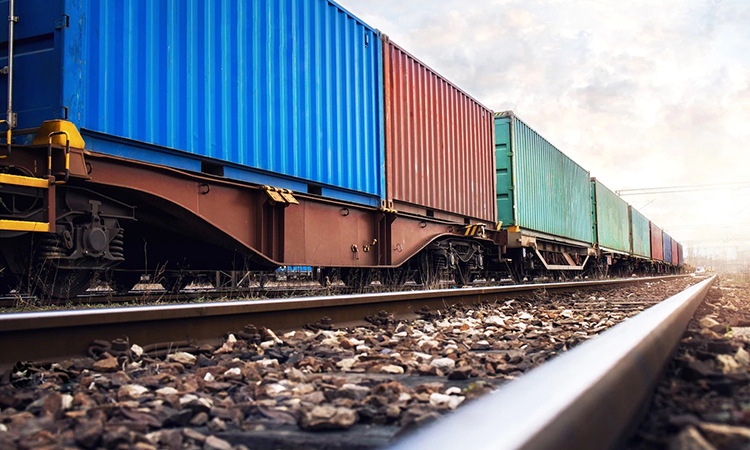The Gati Shakti Multi-Modal Cargo Terminal Policy: Potential and possibilities
Posted: 13 June 2022 | Rita Raj | No comments yet
Rita Raj, General Manager/PRS/Northern Region for the Centre for Railway Information Systems (CRIS) – an IT arm of India’s Ministry of Railways, explores the key features of the Gati Shakti Multi-Modal Cargo Terminal Policy and the potential improvements it offers to rail terminals.


As the world’s fifth largest economy and aspiring to become a $5 trillion economy by 2025, India is focused on developing comprehensive and integrated infrastructure and an efficient logistics ecosystem. To achieve this, Prime Minister Narendra Modi promulgated the Gati Shakti Multi-Modal National Master Plan (GMNMP) of ₹100 Trillion. GMNMP aims to break departmental silos, build multi-modal connectivity, and develop synchronised national transport infrastructure in collaboration with all transport sectors, including railway. In alignment with this national master plan, the Ministry of Railways issued the transportation policy of the Gati Shakti Multi-Modal Cargo Terminal (GCT) in December 2021 to increase transportation capacity by developing the infrastructure of freight terminals.
…overcoming the bottlenecks by building freight terminals is essential for realising the railway’s ambitious plan of achieving decongestion by 50 per cent and handling 1600MT freight by 2024-2025.
The policy aims to promote the proliferation of new cargo terminals and improve existing cargo terminals to accelerate the growth of railway cargo traffic. Despite being a resilient and sustainable mode of transportation, the development of freight terminals has not been commensurate to the growing transportation needs of handling 1210 million tonnes (MT). Freight traffic has increased from 73MT in 1951 to 1210MT in 2021; however, the number of freight terminals has remained almost static, resulting in congested freight terminals and an increased wagon turnaround of 120 hours. Therefore, overcoming the bottlenecks by building freight terminals is essential for realising the railway’s ambitious plan of achieving decongestion by 50 per cent and handling 1600MT freight by 2024-2025.
The GCT policy, in alignment with GMNMP, has the potential to reduce high logistics costs and achieve economic growth. Rail transportation aims to set procedures and a definitive timeframe for synchronisation with various infrastructure sectors, which will help to increase rail’s modal share. Through this policy, rail transportation will contribute to infrastructure expansion and help facilitate India in attaining the United Nations’ ambitious Sustainable Development Goal-9 of building resilient and sustainable infrastructure for national and global prosperity.
The salient features of the policy:
The key provisions of the policy are:
1. Eligibility criteria
Applicants can be a partnership firm, a sole proprietorship firm, companies, registered societies, partnership firms, individual/sole proprietorship firms, companies registered under the Company Act 2013, and limited liability partnership firms. The comprehensive eligibility widens the scope of opportunities for building the GCT.
2. Approval and implementation
The application will be addressed to the Divisional Railway Manager (DRM) office, under the jurisdiction of which the applicant will build the proposed terminal. DRM, head of the divisional working, will approve the application on the recommendation of the divisional committee comprising Ministry of Railway officials of that Division. For expediency and accountability, applications and approvals have definite timelines. During the approval and construction stage of the GCT, the Senior Divisional Operating Manager has been made the co-ordinating officer, whereas, after the commissioning of the GCT, the Senior Divisional Commercial Manager will be a co-ordinating officer.
3. Land licensing
Terminals can be built on private and railway-owned land. For railway-owned land, the licensing period shall be five years, further extendable every five years with a maximum of 35 years.
4. Authorised users and permitted commodities
The GCT operator can handle traffic of any rail user-provided intimation of such users is given to the Ministry of Railway so that rail transportation may incorporate the same in Train Management System (TMS) of Freight Operation Information System (FOIS). The GCT is permitted to book and handle all commodities, including coal and coke.
5. Charging of commercial staff
No cost will be charged from the Gati Shakti Multi-Modal Cargo Terminal Operator (GCTO) to post commercial railway staff in the terminal. In earlier policies related to terminal development, the operators had to bear this staff cost.
6. Investment in infrastructure
The investor will bear the entire capital cost for building infrastructure and its maintenance; however, the ownership will remain with the Ministry of Railway. As a result, GCTO can develop infrastructure facilities and provide value-added services of warehousing, processing, packaging, etc.
7. Revenue sharing
The Ministry of Railway will levy the terminal charges for rakes handling and reimburse the investor on an agreed formula.
8. Dispute resolution
DRM will be the decisive authority for any dispute relating to the policy. Conciliation and arbitration will be governed by Indian Railways General Conditions of Contract, 2020.
9. Termination of agreement
If GCTO commits serious irregularity, the railway administration may terminate the agreement by giving Show Cause Notice. GCTO will have the opportunity of making representation and submitting their viewpoint.
The benefits for investors
The policy remains historic as, for the first time in Indian Railways, the surplus railway land of 510km2 is being offered to third parties for building logistic terminals through private participation. There was long pending demand by private investors and freight operators to supply railway land for building private sidings and terminals. It is a win-win situation for the Ministry of Railway as well as industries. The Ministry of Railway will gain by charging a license fee for railway land and enhancing its freight rake handling capacity and resultant increased freight loading and freight earning. For investors, it is an excellent opportunity as railway land has immense potential for profitability due to its strategic location.


Another essential feature of the policy from previous terminal development policies is not charging commercial staff costs from the terminal developer. In the earlier policies of siding and private freight terminal, the operator had to bear staff costs which were objectionable to them as they added to their price. Hence, removing this burden may attract investment in the building of GCT. Another important liberalised feature is dispensing with land licensing fees for using railway tracks connecting their private terminal to the nearest rail line, which so far was paid by the terminal operators.
These attractive features of the policy have garnered enough interest. As a result, within four months of policy publication, the Ministry of Railway has received approximately 40 applications for building GCT, out of which the Ministry of Railway have already approved 20 applications. If this trend continues, the investment under this policy will enhance the handling capacity of 36.5 billion of freight traffic in one year and achieve the goals of GNMNP.
Moving forward
For integrated transportation, rail freight terminals need to be aligned with the Multi-Modal Master Plan of GMNMP. Multi-modal necessitates a collaborative approach of integrating railway freight terminals with road terminals and port terminals with other transport sectors. For example, the GCT freight terminals may be aligned with the existing and prospective infrastructure freight terminals of the Eastern and Western Dedicated Freight Corridor (DFC), Bharatmalas project of the road sector, the Sagarmala project of the port sector and Container Rail Terminals of CONCOR.
Through its automated Freight Operation Information System (FOIS), the Ministry of Railway captures enormous and exhaustive data related to terminal capacity and infrastructure bottlenecks. This data can be leveraged in identifying bottlenecks and making a comprehensive master plan of prospective freight terminals over Indian Railways.
The GCT policy can also facilitate the development of railway freight terminals through PPP. The growth of freight terminals and enhancement of handling capacity will increase the wagon turnaround and reduce logistic costs.


Rita Raj is currently the General Manager/PRS/Northern Region for the Centre for Railway Information Systems (CRIS). With 25 years’ experience in the commercial and operating departments of Indian Railways, Rita has previously headed the Commercial Department (Vadodara Division) and the Operating Department (Mumbai Division of the Western Railway). Furthermore, during her time as the Director of Freight Marketing within the Ministry of Railways, she formulated policies of private investment and their model agreements for capacity enhancement of freight terminals and wagons. Views presented in this article are personal.








